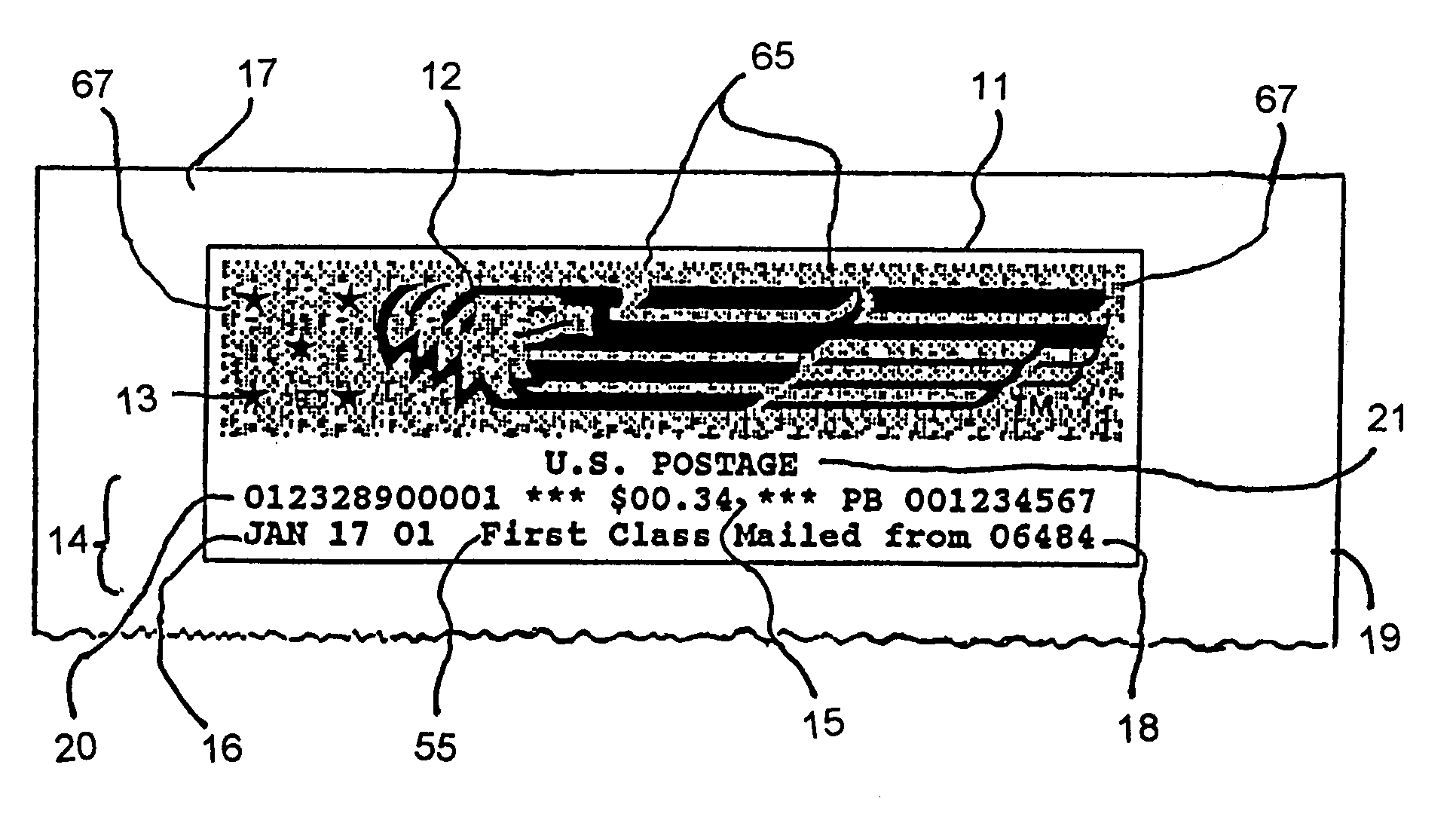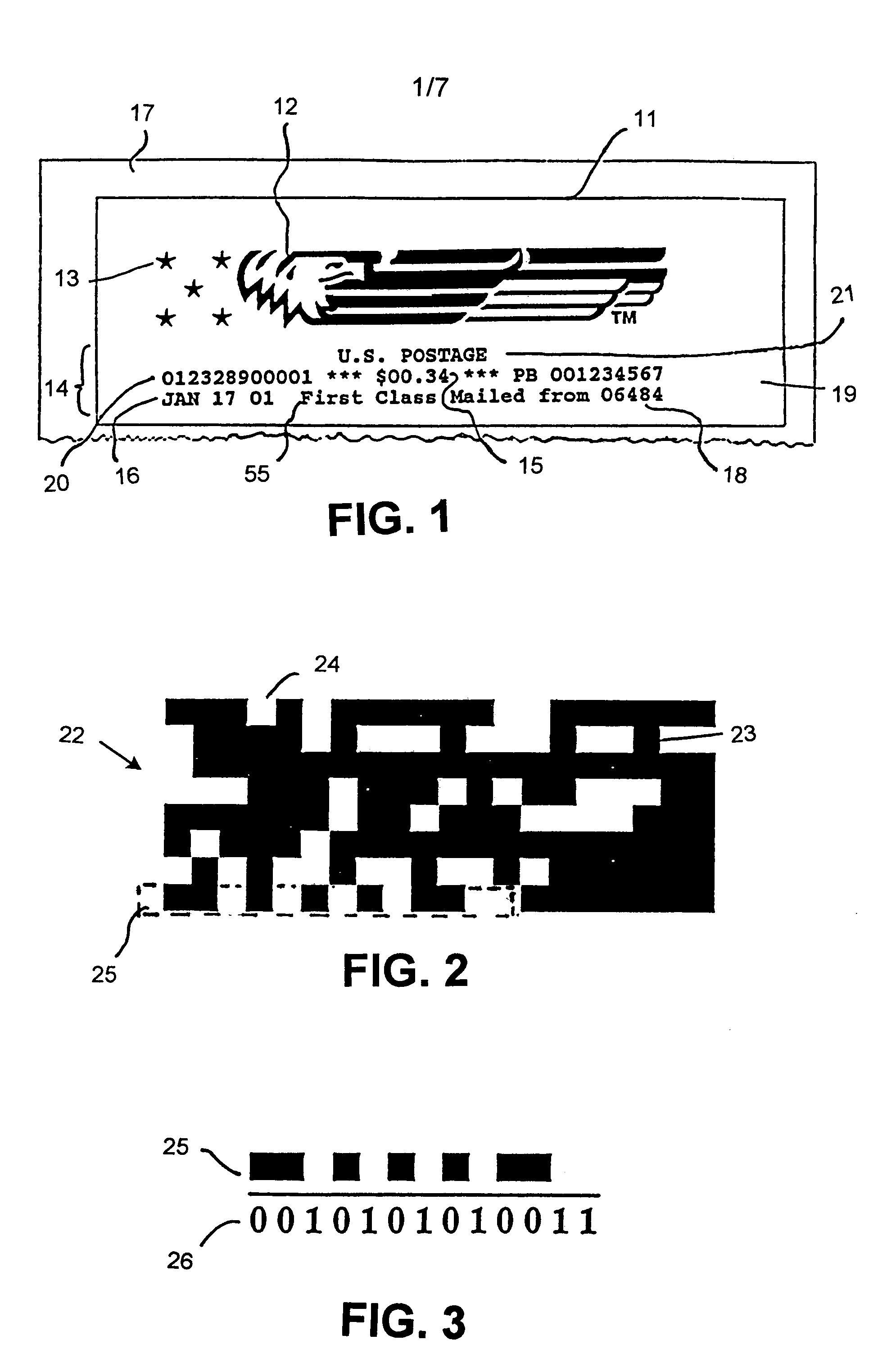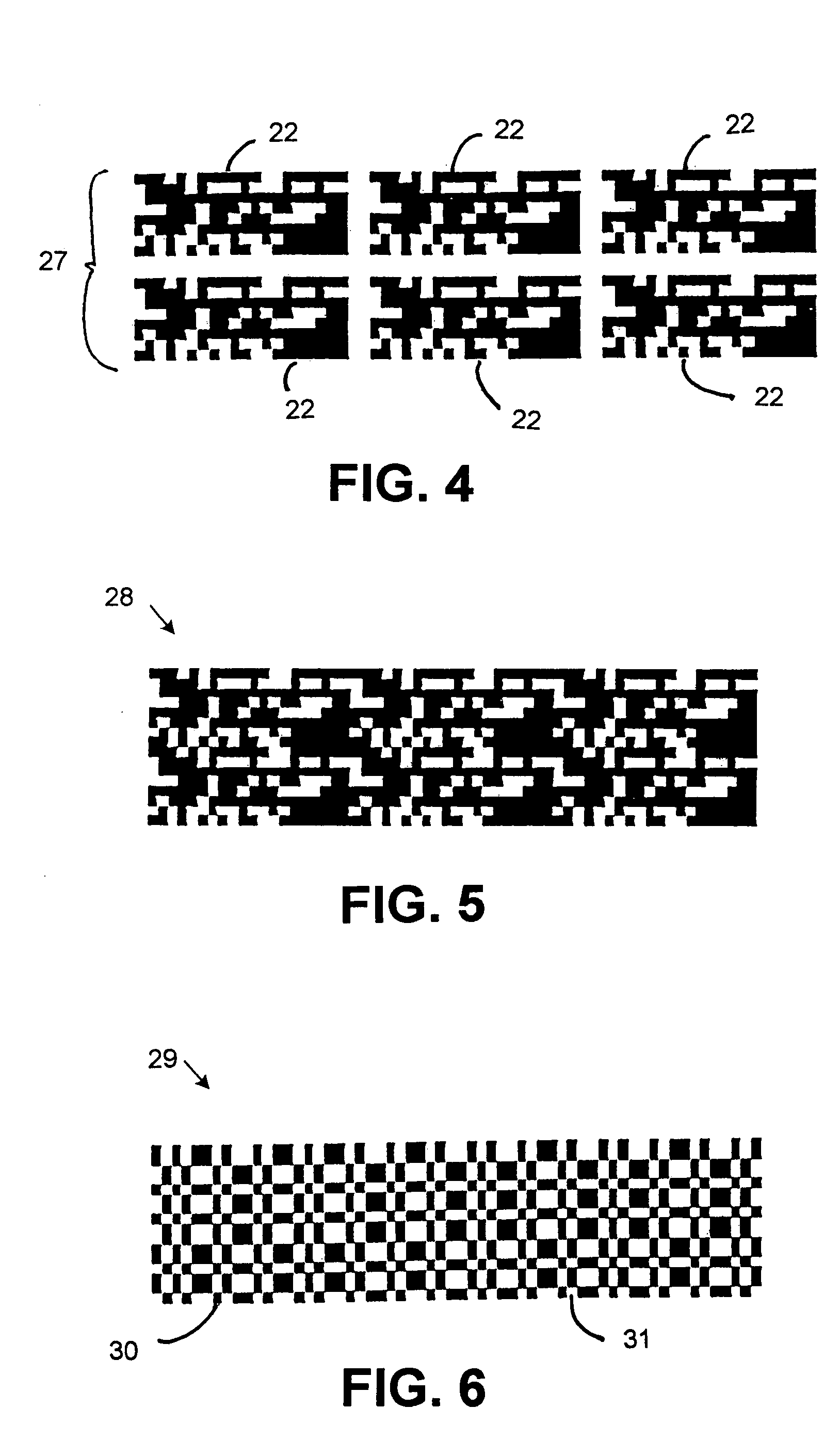Method for embedding information in an image
a technology for embedding information and images, applied in the field of printing images, can solve the problems of increasing the size of black areas, unable to align scanned pixels perfectly with printed pixels, etc., and achieve the effect of reducing the production of fraudulent images and difficult to copy images
- Summary
- Abstract
- Description
- Claims
- Application Information
AI Technical Summary
Benefits of technology
Problems solved by technology
Method used
Image
Examples
Embodiment Construction
[0024]Referring now to the drawings in detail, and more particularly to FIG. 1, the reference character 11 represents a postal indicia. Postal indicia 11 includes graphic material in the form of an eagle 12 and stars 13 and alphanumeric material 14. Indicia 11 also contains a dollar amount 15; the date 16 that postal indicia 11 was affixed to mail piece 17; the zip code where mail piece 17 was mailed from 18; the postal meter serial number 19; a security code 20; the class of mail 55; and the country 21.
[0025]FIG. 2 is a drawing of a two-dimensional bar code 22 that represents in coded form the information contained in material 14 and other information. Bar code 22 comprises a plurality of black modules 23 and white modules 24. Black modules 23 represent a “zero”, and white modules 24 represent a “one”. Portion 25 of bar code 22 represents the zip code 18 of FIG. 1 with the least significant bit on the left.
[0026]FIG. 3 is a drawing of portion 25 of bar code 22. The binary represent...
PUM
 Login to View More
Login to View More Abstract
Description
Claims
Application Information
 Login to View More
Login to View More - R&D
- Intellectual Property
- Life Sciences
- Materials
- Tech Scout
- Unparalleled Data Quality
- Higher Quality Content
- 60% Fewer Hallucinations
Browse by: Latest US Patents, China's latest patents, Technical Efficacy Thesaurus, Application Domain, Technology Topic, Popular Technical Reports.
© 2025 PatSnap. All rights reserved.Legal|Privacy policy|Modern Slavery Act Transparency Statement|Sitemap|About US| Contact US: help@patsnap.com



